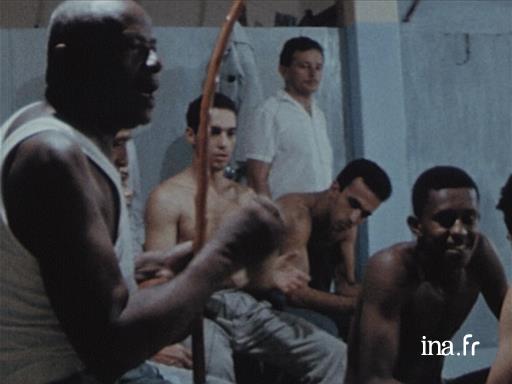Capoeira: Master Bimba in Salvador de Bahia

Information
In Bahia, young people follow the classes of master Bimba on how to perform capoeira, a martial art-like traditional dance of African origin, particularly Angola. The figures and moves are performed to the sound of a traditional musical instrument, the berimbau.
Context
When Pierre Kast travelled to Bahia in 1966, the most prominent capoeirista was Bimba, creator of the Luta regional da Bahia, known as Capoeira regional, which he taught professionally to young people who had enough money to pay for the course. A few boys who could not afford the classes were able to attend for free. The style emphasizes martial efficiency. Bimba, an excellent musician, known for decades for his rhythmic style, leads the circle with his berimbau, assisted by a pandeiro player. When putting on a show, he was the only one to mobilize a women's choir, which you can hear on a record made in 1960. The woman's voices accentuated the similarities between the songs used for capoeira and candomble.
Using two different synchronous-sound cameras, the team filmed the «match» that usually took place at the end of the lesson, after adding adequate lighting for the shots in the Academy building. The Terreiro de Jesus district, where the school is located in the historic centre of Salvador. It was abandoned at the beginning of the century by the bourgeoisie who left to live in the modern city which was built on the road leading to the beach. It was a dangerous area with a bad reputation, despite the proximity of the Faculty of medicine.





